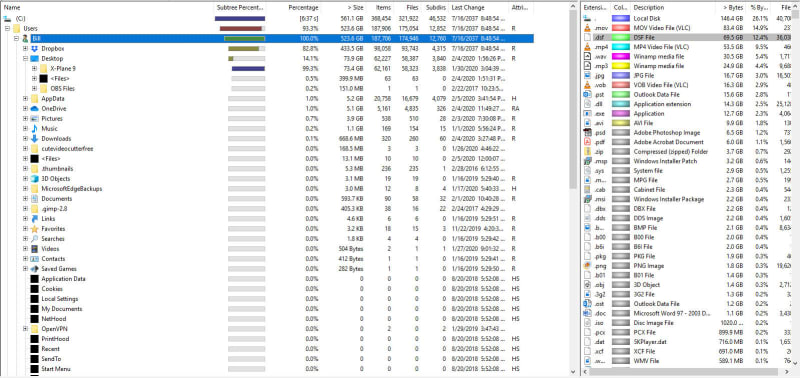bsquared18
Technical User
Hello,
I have the latest iteration of Windows 10 on my laptop computer. "Properties" for Local Disc C shows a capacity of 567 GB. The free space is just under one GB. Naturally, I want to reduce the amount of used space.
Most of my files are in my Dropbox account, synced to my laptop and other devices. My Dropbox account has two TBs of space.
I've tried several methods to increase the free space on the C drive, as indicated by what shows up in "Properties" for that drive.
For example, I've simply deleted files and removed them from the Recycle bin.
I've used Dropbox's "Selective Unsync" to unsync folders on the laptop.
I've moved folders from Dropbox into OneDrive with "Save space and download files to use them" selected, making them no longer visible in File Explorer and (supposedly) no longer taking up space on the C drive (I thought).
Sometimes when I take one of the above actions, the C-Drive Properties will temporarily show an increase in free space. But shortly thereafter, the amount will return to a bit below one GB.
Any suggestions?
Thanks,
Bill
I have the latest iteration of Windows 10 on my laptop computer. "Properties" for Local Disc C shows a capacity of 567 GB. The free space is just under one GB. Naturally, I want to reduce the amount of used space.
Most of my files are in my Dropbox account, synced to my laptop and other devices. My Dropbox account has two TBs of space.
I've tried several methods to increase the free space on the C drive, as indicated by what shows up in "Properties" for that drive.
For example, I've simply deleted files and removed them from the Recycle bin.
I've used Dropbox's "Selective Unsync" to unsync folders on the laptop.
I've moved folders from Dropbox into OneDrive with "Save space and download files to use them" selected, making them no longer visible in File Explorer and (supposedly) no longer taking up space on the C drive (I thought).
Sometimes when I take one of the above actions, the C-Drive Properties will temporarily show an increase in free space. But shortly thereafter, the amount will return to a bit below one GB.
Any suggestions?
Thanks,
Bill


![[bigsmile] [bigsmile] [bigsmile]](/data/assets/smilies/bigsmile.gif)